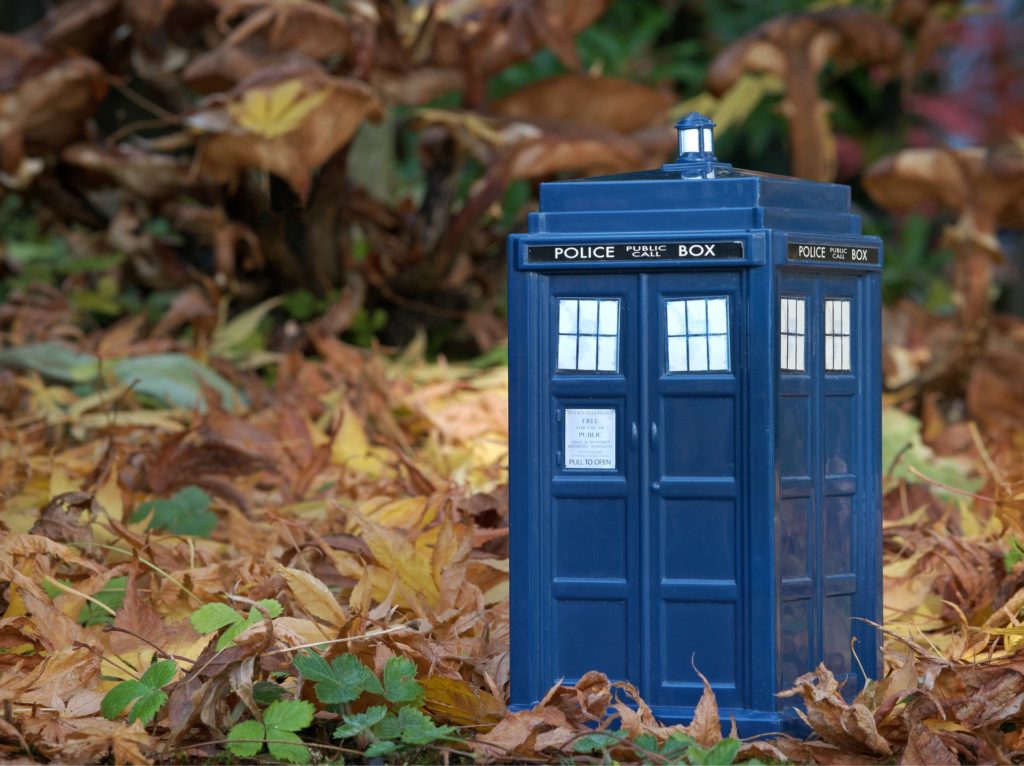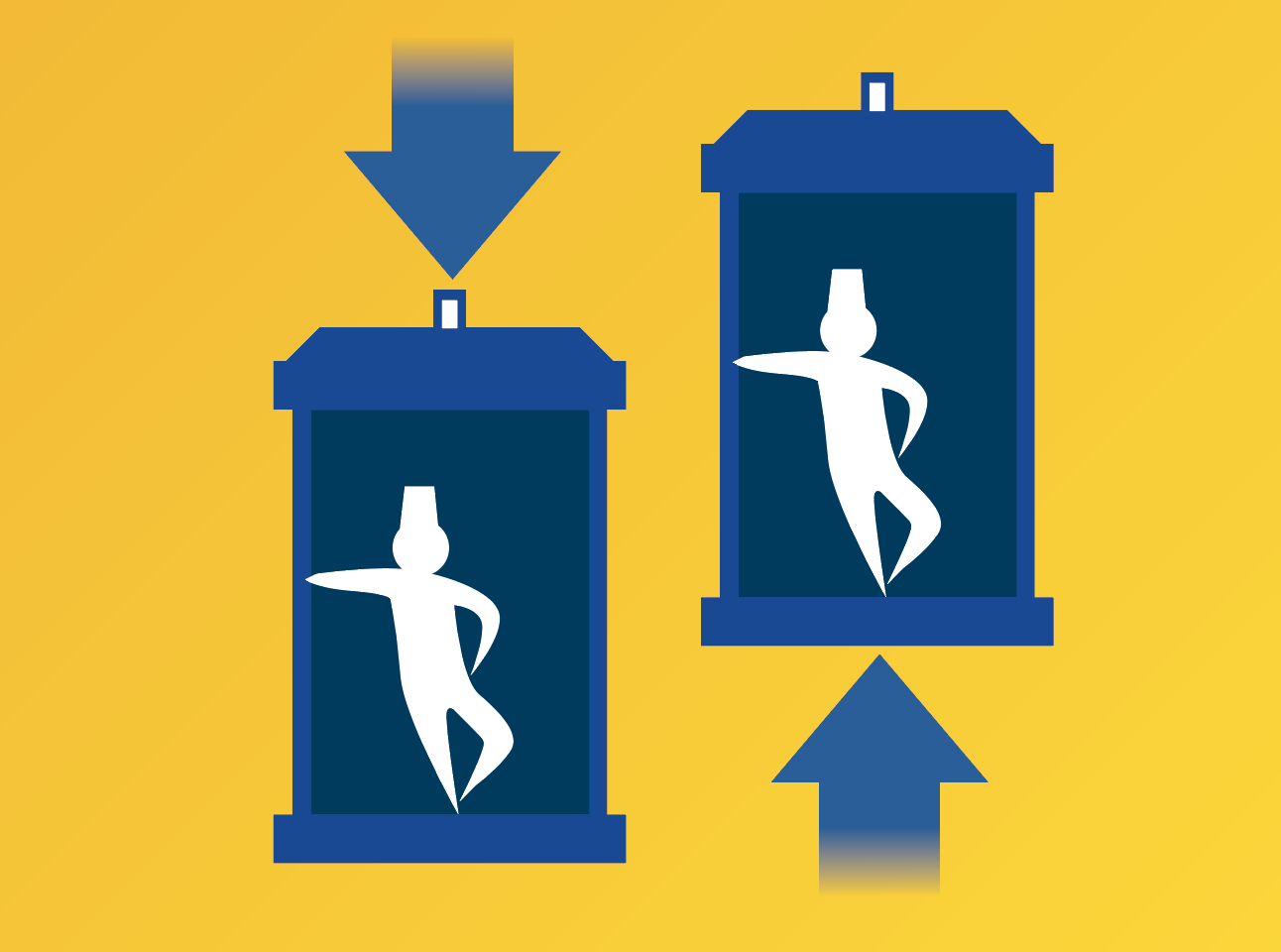The science and tech of Doctor Who
by Scott Dutfield · 28/12/2019

From the Daleks to Dyson spheres, discover the science and tech behind the Time Lord
The Doctor has always stretched the boundaries of space and time, literally. Since it first hit the TV screens in 1963, Doctor Who has continued to stretch our imaginations, journeying to alien worlds in far-off galaxies and delving into the complexities of time travel. Science and science fiction are carefully intertwined to create an entertaining combination of fantasy and reality, supported by somewhat accurate depictions of various scientific principles. From venturing through wormholes to battling the Cybermen, Doctor Who is filled with hidden science that seems completely impossible.
As a Time Lord, the Doctor is attuned to the fine stitches in the fabric of space-time and how best to navigate through them. The show tackles both the limitations and endless possibilities of space and time travel according to Einstein’s theories of special and general relativity. Even creating violent villains based on quantum mechanics (the Weeping Angels) and advanced bionics (the Cybermen) or harvesting energy from the stars (like the Tardis) are just some of the ways Doctor Who is keeping science at the forefront of science fiction.
The science of space-time
We often think about space and time as two different entities. Space is perceived in three dimensions, but we view time in a singular dimension, always flowing ‘forward’ into the future. However, the truth is that space and time are integrated together as the four-dimensional space-time, or as the Doctor puts it, “a big ball of wibbly-wobbly timey-wimey…stuff”.
Space-time can be thought of as a stretchy sheet, and masses – such as planets – sitting in space-time distort it in the same way a bowling ball would create a dip on the surface of a trampoline. If a bowling ball’s mass were great enough, the dip would continue to travel downwards and potentially connect with another sheet. This would theoretically connect the two sheets of space-time by a tunnel called a wormhole, or an Einstein-Rosen bridge. In theory, these connected folds of space-time could be used to create an interstellar shortcut between different regions of the universe.
General relativity
Presented in 1915, this theory explains space-time

Free-fall and floating
Einstein explained in his theory of general relativity that free-falling is the same as floating in space, therefore Newton’s theory of gravity alone couldn’t be correct.

Gravity and acceleration
Accelerating in a vehicle feels the same as the effects of gravity. Einstein postulated that both are caused by curved paths through space-time.

Bending of light
While accelerating in your vessel, the path of light from a source would appear to bend due to the curvature of space-time.
The ultimate solar power
The Doctor uses the energy of a star to power the TARDIS, but can humans truly tap into such solar energy potentials? If we wanted to harness the full energy of a star, we would need to create what is known as a Dyson sphere. In 1960, scientist Freeman Dyson first described the concept of a network of solar panels to completely envelop a star and tap into its immense energy output. The solar mega structure of a Dyson sphere, or shell, would theoretically comprise of millions of individual solar panel satellites capable of capturing, storing and transmitting the energy back to Earth for use. However, in order to construct such an array around a Sun-like star, we would require more material than currently exists in our entire Solar System!
Bottling a star
If Earth’s engineering can’t reach the Sun to create a Dyson sphere, then why not recreate a star on Earth? The Sun’s nuclear fusion is made possible due to its immense mass and gravity heating its core to 15 million degrees Celsius. Within its internal incinerator, hydrogen atoms can fuse together to form helium. It’s this reaction that releases energy, and it’s a process that we could try to replicate.
Currently, we have mastered the process of splitting the atom to release energy, known as nuclear fission. However, if we could take inspiration from the Sun and succeed in engineering a viable fusion reactor to stick atoms together, our power-producing potential could be out of this world.
There are two main approaches to achieve nuclear fusion: magnetic or inertial confinement. Inertial confinement uses laser beams to focus energy and heat up hydrogen isotopes, forcing the atoms to come together to form helium. Magnetic confinement, however, uses magnetic fields to confine and compress hydrogen plasma at high temperatures until fusion occurs, generating helium and energy.
In both cases the energy released from fusion can be used to heat water, creating steam that in turn spins a turbine that can power a generator, ultimately producing electricity. With our current fusion reactor technology, however, the energy required to power the process of fusion is greater than the energy output of the reactors.
Don’t blink!
As one of the more creepy Doctor Who villains, the Weeping Angels can only be stopped when met with a human gaze – that is until you blink, of course. This sinister skill, however, isn’t just a sci-fi trick – it’s based on quantum physics.
Known as the quantum zeno effect, this is when a particle moving through space is halted when it is continually observed in what is essentially a particle game of What’s the time Mr Wolf? Several experiments, including one known as the ‘double-slit’ test, have found that particles act differently when observed, providing some of the first displays of the quantum zeno effect phenomenon.
Sonic science
A screwdriver, pen, lipstick and gun – sonic technology has always been in the firm grip of the Doctor, her friends and enemies. At the press of a button, the Doctor can disarm a Silurian solider, sever a suspended rope and crack any lock… as long as it’s not made of wood.
The power of the sonic screwdriver is not merely the product of mechanical make-believe but follows the logic of high-kinetic sonic waves. The physical abilities of sonic technology can be demonstrated in acoustic levitation. Using a sound-emitting transducer, sound waves are sent upwards to an overhanging reflector, which reflects the waves back down. At a specific wavelength this sound pressure can hold an object in its grasp and appear to make it levitate. However, these sound waves can do much more than hold a ball in mid-air.
Sound waves, such as ultrasound, can be used to see inside the body, used at high frequencies to vibrate the dirt away when cleaning tanks, while infrasound can even be weaponised to affect hearing, balance and induce headaches.
This article was originally published in How It Works issue 117
For more science and technology articles, pick up the latest copy of How It Works from all good retailers or from our website now. If you have a tablet or smartphone, you can also download the digital version onto your iOS or Android device. To make sure you never miss an issue of How It Works magazine, subscribe today!





